|
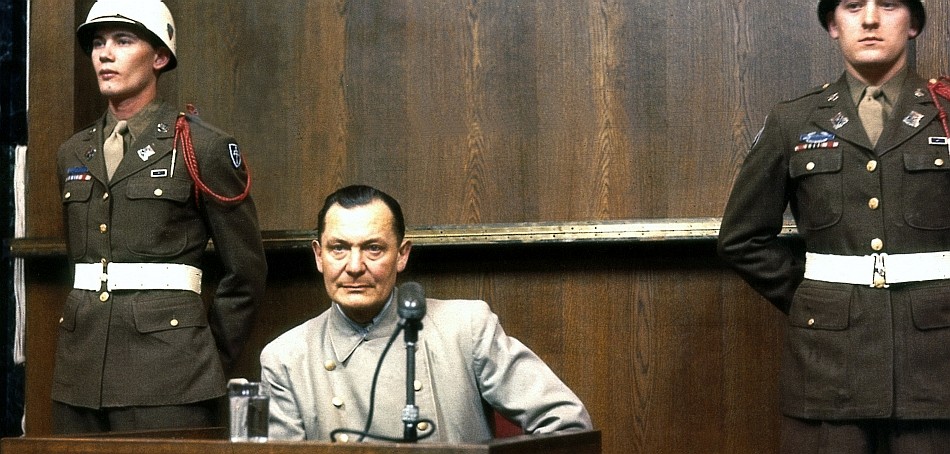
Herman
Goering on trial at Nuremburg
A WW1 veteran, the
Reichsmarschall was head of the Luftwaffe, and the founder of the
Gestapo. After the fall of France he stole millions of pounds worth of art from Jews, and amassed a personal fortune.
Hermann
Göring took part in the beer hall putsch of 1923 and was wounded in the groin. Subsequently, taking morphine for pain relief, he became addicted to the drug for the rest of his life.
In 1940, the Marshal ordered the bombing of the civilian population of Britain (the Blitz) and was involved in planning the
holocaust. Goering was the highest ranking defendant during the Nuremberg Trials. Sentenced to hang, he committed suicide in his cell the night before his execution by cyanide ingestion.
You may care to agree, that in a modern civilzation, the death
sentence is itself a Human
Rights abomination. Though still legal in some American
states. This despite the atrocities committed by the offender.
And that goes for Vladimir Putin, another dictator with world
domination as his driving force. He should be imprisoned, not
executed - should the world avoid Thermonuclear Anihilation.
A veteran World War I fighter pilot ace, Göring was a recipient of the Pour le Mérite ("The Blue Max"). He was the last commander of Jagdgeschwader 1 (JG I), the fighter wing once led by Manfred von
Richthofen (The Red Baron). An early member of the Nazi Party, Göring was among those wounded in Adolf Hitler's failed Beer Hall Putsch in 1923. While receiving treatment for his injuries, he developed an addiction to morphine which persisted until the last year of his life. After Hitler became Chancellor of Germany in 1933, Göring was named as minister without portfolio in the new government. One of his first acts as a cabinet minister was to oversee the creation of the Gestapo, which he ceded to Heinrich Himmler in 1934.
Following the establishment of the Nazi state, Göring amassed power and political capital to become the second most powerful man in Germany. He was appointed commander-in-chief of the Luftwaffe (air force), a position he held until the final days of the regime. Upon being named Plenipotentiary of the Four Year Plan in 1936, Göring was entrusted with the task of mobilizing all sectors of the economy for war, an assignment which brought numerous government agencies under his control. In September 1939, Hitler designated him as his successor and deputy in all his offices. After the Fall of France in 1940, he was bestowed the specially created rank of Reichsmarschall, which gave him seniority over all officers in Germany's armed forces.
Göring joined the Nazi Party in 1922 after hearing a speech by Hitler. He was given command of the Sturmabteilung (SA) as the Oberster SA-Führer in 1923. He was later appointed an SA-Gruppenführer (Lieutenant general) and held this rank on the SA rolls until 1945. At this time,
Carin - who liked Hitler - often played hostess to meetings of leading Nazis, including her husband, Hitler, Rudolf Hess, Alfred Rosenberg, and Ernst Röhm. Hitler later recalled his early association with Göring:
"I liked him. I made him the head of my SA. He is the only one of its heads that ran the SA properly. I gave him a dishevelled rabble. In a very short time he had organised a division of 11,000 men."
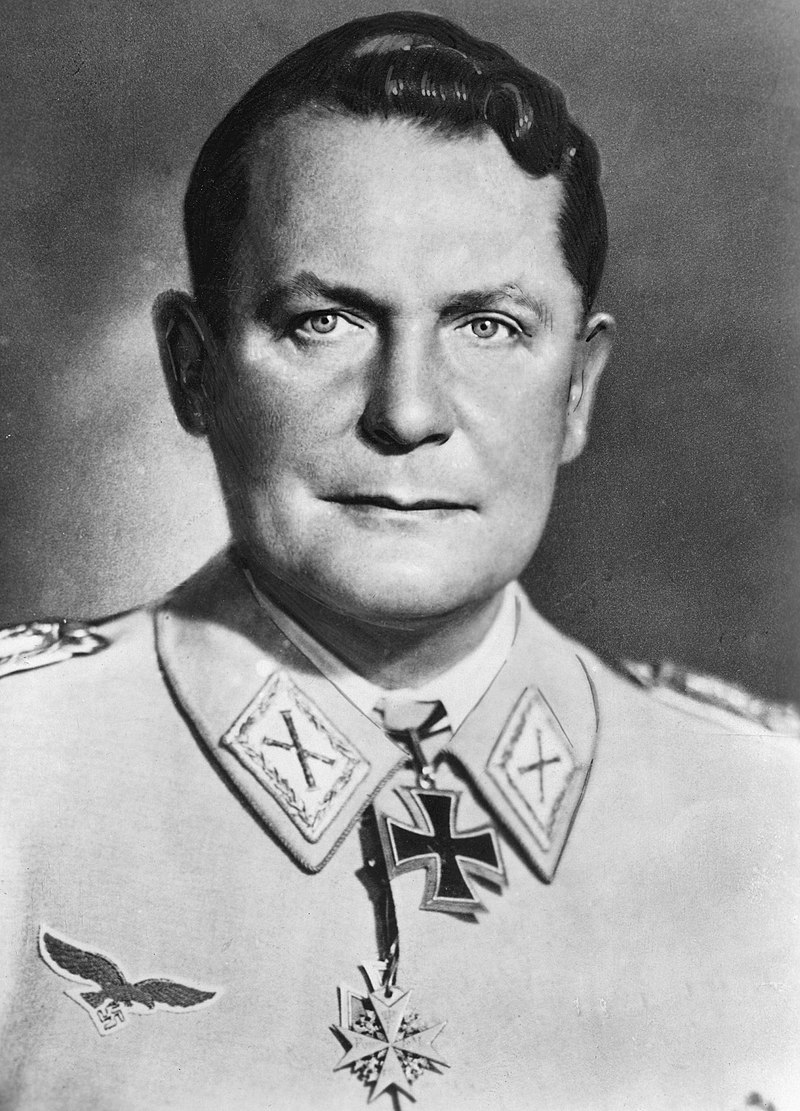
REICHSTAG FIRE
The Reichstag fire occurred on the night of 27 February 1933. Göring was one of the first to arrive on the scene. Marinus van der Lubbe, a Communist radical, was arrested and claimed sole responsibility for the fire. Göring immediately called for a crackdown on Communists.
The Nazis took advantage of the fire to advance their own political aims. The Reichstag Fire Decree, passed the next day on Hitler's urging, suspended basic rights and allowed detention without trial. Activities of the German Communist Party were suppressed, and some 4,000 Party members were arrested. Göring demanded that the prisoners should be shot, but Rudolf Diels, head of the Prussian political police, ignored the order. Some researchers, including William L. Shirer and Alan Bullock, are of the opinion that the Nazi Party itself was responsible for starting the fire.
At the Nuremberg trials, General Franz Halder testified that Göring admitted responsibility for starting the fire. He said that, at a luncheon held on Hitler's birthday in 1942, Göring said, "The only one who really knows about the Reichstag is I, because I set it on fire!"
When Hitler was named chancellor of Germany on 30 January 1933, Göring was appointed as Reichsminister without portfolio and Reichskommissar of
Aviation. This was followed on 11 April 1933 by his appointment as Minister-President of Prussia, Prussian interior minister and chief of the Prussian police. In October 1933, Göring was made a member of Hans Frank's Academy for German Law at its inaugural meeting.
Wilhelm Frick, the Reich interior minister, and the head of the SS, Heinrich Himmler, hoped to create a unified police force for all of Germany, but Göring on 26 April 1933 established a special Prussian police force, with Rudolf Diels at its head. The force was called the Geheime Staatspolizei (transl. Secret State Police), or Gestapo. Göring, thinking that Diels was not ruthless enough to use the Gestapo effectively to counteract the power of the SA, handed over control of the Gestapo to Himmler on 20 April 1934. By this time, the SA numbered over two million men. In his own Nuremberg testimony, Göring denied this story.
NAZI POTENTATE
When Hitler was named chancellor of Germany on 30 January 1933, Göring was appointed as Reichsminister without portfolio and Reichskommissar of Aviation. This was followed on 11 April 1933 by his appointment as Minister-President of Prussia, Prussian interior minister and chief of the Prussian police. In October 1933, Göring was made a member of Hans Frank's Academy for German Law at its inaugural meeting.
Wilhelm Frick, the Reich interior minister, and the head of the SS,
Heinrich Himmler, hoped to create a unified police force for all of Germany, but Göring on 26 April 1933 established a special Prussian police force, with Rudolf Diels at its head. The force was called the Geheime Staatspolizei (Secret State Police), or Gestapo. Göring, thinking that Diels was not ruthless enough to use the Gestapo effectively to counteract the power of the SA, handed over control of the Gestapo to Himmler on 20 April 1934. By this time, the SA numbered over two million men.
Hitler was deeply concerned that Ernst Röhm, the chief of the SA, was planning a coup. Himmler and Reinhard Heydrich plotted with Göring to use the Gestapo and SS to crush the SA. Members of the SA got wind of the proposed action and thousands of them took to the streets in violent demonstrations on the night of 29 June 1934. Enraged, Hitler ordered the arrest of the SA leadership. Röhm was shot dead in his cell when he refused to commit suicide; Göring personally went over the lists of
prisoners - numbering in the thousands - and determined who else should be shot. At least 85 people were killed in the period of 30 June to 2 July, which is now known as the Night of the Long Knives. Hitler admitted in the Reichstag on 13 July that the killings had been entirely illegal, but claimed a plot had been under way to overthrow the Reich. A retroactive law was passed making the action legal. Any criticism was met with arrests.
THE END
As the Soviets approached Berlin, Hitler's efforts to organise the defence of the city became ever more meaningless and futile. His last birthday, celebrated at the
Führerbunker in Berlin on 20 April 1945, was the occasion for leave-taking by many top Nazis, Göring included. By this time, Göring's hunting lodge Carinhall had been evacuated, the building destroyed, and its art treasures moved to Berchtesgaden and elsewhere. Göring arrived at his estate at Obersalzberg on 22 April, the same day that Hitler, in a lengthy diatribe against his generals, first publicly admitted that the war was lost and that he intended to remain in Berlin to the end and then commit suicide.
Göring feared being branded a traitor if he tried to take power, but also feared being accused of dereliction of duty if he did nothing. After some hesitation, Göring reviewed his copy of the 1941 decree naming him Hitler's successor. After conferring with Koller and Hans Lammers (the state secretary of the Reich Chancellery), Göring concluded that by remaining in Berlin to face certain death, Hitler had incapacitated himself from governing. All agreed that under the terms of the decree, it was incumbent upon Göring to take power in Hitler's stead. He was also motivated by fears that his rival, Martin Bormann, would seize power upon Hitler's death and would have him killed as a traitor. With this in mind, Göring sent a carefully worded telegram asking Hitler for permission to take over as the leader of Germany, stressing that he would be acting as Hitler's deputy. He added that, if Hitler did not reply by 22:00 that night (23 April), he would assume that Hitler had indeed lost his freedom of action, and would assume leadership of the Reich.
The telegram was intercepted by Bormann, who convinced Hitler that Göring was a traitor. Bormann argued that Göring's telegram was not a request for permission to act as Hitler's deputy, but a demand to resign or be overthrown. Bormann also intercepted another telegram in which Göring directed Ribbentrop to report to him if there was no further communication from Hitler or Göring before midnight. Hitler sent a reply to Göring
- prepared with Bormann's help - rescinding the 1941 decree and threatening him with execution for high treason unless he immediately resigned from all of his offices. Göring duly resigned. Afterwards, Hitler (or Bormann, depending on the source) ordered the SS to place Göring, his staff, and Lammers under house arrest at Obersalzberg. Bormann made an announcement over the radio that Göring had resigned for health reasons.
By 26 April, the complex at Obersalzberg was under attack by the Allies, so Göring was moved to his castle at Mauterndorf. In his last will and testament, Hitler expelled Göring from the party, formally rescinded the decree making him his successor, and upbraided Göring for "illegally attempting to seize control of the state." He then appointed Karl Dönitz, the Navy's commander-in-chief, as president of the Reich and commander-in-chief of the armed forces. Hitler and his wife, Eva Braun, committed suicide on 30 April 1945, a few hours after a hastily arranged wedding. Göring was freed on 5 May by a passing Luftwaffe unit, and he made his way to the U.S. lines in hopes of surrendering to them rather than to the Soviets. He was taken into custody near Radstadt on 6 May by elements of the 36th Infantry Division of the US Army. This move likely saved Göring's life; Bormann had ordered him executed if Berlin had fallen.
NUREMBURG TRIALS
Göring was flown to Camp Ashcan, a temporary prisoner-of-war camp housed in the Palace Hotel at Mondorf-les-Bains, Luxembourg. Here he was weaned off dihydrocodeine (a mild morphine
derivative) - he had been taking the equivalent of three or four grains (260 to 320 mg) of morphine a
day - and was put on a strict diet; he lost 60 pounds (27 kg). His IQ was tested while in custody and found to be
138. Top Nazi officials were transferred in September to Nuremberg, which was to be the location of a series of military tribunals beginning in November.
Göring was the second-highest-ranking official tried at Nuremberg, behind Reich President (former Admiral) Karl Dönitz. The prosecution levelled an indictment of four charges, including a charge of conspiracy; waging a war of aggression; war crimes, including the plundering and removal to Germany of works of art and other property; and crimes against humanity, including the disappearance of political and other opponents under the Nacht und Nebel (transl. Night and Fog) decree; the torture and ill treatment of prisoners of war; and the murder and enslavement of civilians, including what was at the time estimated to be 5,700,000 Jews. Not permitted to present a lengthy statement, Göring declared himself to be "in the sense of the indictment not guilty."
The trial lasted 218 days. The prosecution presented its case from November through March, and Göring's
defence - the first to be presented - lasted from 8 to 22 March. The sentences were read on 30 September 1946. Göring, forced to remain silent while seated in the dock, communicated his opinions about the proceedings using gestures, shaking his head, or laughing. He constantly took notes and whispered with the other defendants, and tried to control the erratic behaviour of Hess, who was seated beside him. During breaks in the proceedings, Göring tried to dominate the other defendants, and he was eventually placed in solitary confinement when he attempted to influence their testimony. Göring told American psychiatrist Leon Goldensohn that the court was "stupid" to try "little fellows" like Funk and Kaltenbrunner instead of letting Göring take all the blame on himself. He also claimed that he had never heard of most of the other defendants before the trial.
On several occasions over the course of the trial, the prosecution showed films of the concentration camps and other atrocities. Everyone present, including Göring, found the contents of the films shocking; he said that the films must have been faked. Witnesses, including Paul Körner and Erhard Milch, tried to portray Göring as a peaceful moderate. Milch stated that it had been impossible to oppose Hitler or disobey his orders; to do so would likely have meant death for oneself and one's family. When testifying on his own behalf, Göring emphasised his loyalty to Hitler, and claimed to know nothing about what had happened in the concentration camps, which were under Himmler's control. He provided evasive, convoluted answers to direct questions and had plausible excuses for all of his actions during the war. He used the witness stand as a venue to expound at great length on his own role in the Reich, attempting to present himself as a peacemaker and diplomat before the outbreak of the war. During cross-examination, chief prosecutor Robert H. Jackson read the minutes of a meeting that had been held shortly after Kristallnacht, a major pogrom in November 1938. At the meeting, Göring had plotted to confiscate Jewish property in the wake of the pogrom. Later, David Maxwell-Fyfe proved that Göring must have known about the killing of 50 airmen who had been recaptured after escaping from Stalag Luft III in time to have saved them. He also presented clear evidence that Göring knew about the extermination of the Hungarian Jews.
Göring was found guilty on all four counts and was sentenced to death by hanging. The judgment stated:
"There is nothing to be said in mitigation. For Göring was often, indeed almost always, the moving force, second only to his leader. He was the leading war aggressor, both as political and as military leader; he was the director of the slave labour programme and the creator of the oppressive programme against the Jews and other races, at home and abroad. All of these crimes he has frankly admitted. On some specific cases there may be conflict of testimony, but in terms of the broad outline, his own admissions are more than sufficiently wide to be conclusive of his guilt. His guilt is unique in its enormity. The record discloses no excuses for this man."
Göring made an appeal asking to be shot as a soldier instead of hanged as a common criminal, but the court refused. He committed suicide with a potassium cyanide capsule the night before he was to be hanged.
Göring's body, as with those of the men who were executed, was displayed at the execution ground for witnesses. The bodies were cremated at Ostfriedhof, Munich, and the ashes were scattered in the Isar River.
GORING'S PROPERTIES
Göring's name is closely associated with the Nazi plunder of Jewish property. His name appears 135 times on the OSS Art Looting Investigation Unit (ALIU) Red Flag Names List compiled by US Army intelligence in 1945-6 and declassified in 1997.
The confiscation of Jewish property gave Göring the opportunity to amass a personal fortune. Some properties he seized himself or acquired for a nominal price. In other cases, he collected bribes for allowing others to steal Jewish property. He took kickbacks from industrialists for favourable decisions as Four Year Plan director, and money for supplying arms to the Spanish Republicans in the Spanish Civil War via Pyrkal in Greece (although Germany was supporting Franco and the Nationalists).
Göring was appointed Reich Master of the Hunt in 1933 and Master of the German Forests in 1934. He instituted reforms to the forestry laws and acted to protect endangered species. Around this time he became interested in Schorfheide Forest, where he set aside 100,000 acres (400 km2) as a state park, which is still extant. There he built an elaborate hunting lodge, Carinhall, in memory of his first wife, Carin. By 1934, her body had been transported to the site and placed in a vault on the estate. Through most of the 1930s, Göring kept pet lion cubs, borrowed from the Berlin Zoo, both at Carinhall and at his house at Obersalzberg. The main lodge at Carinhall had a large art gallery where Göring displayed works that had been plundered from private collections and museums around Europe from 1939 onward.
Göring worked closely with the Einsatzstab Reichsleiter Rosenberg (Reichsleiter Rosenberg Taskforce), an organisation tasked with the looting of artwork and cultural material from Jewish collections, libraries, and museums throughout Europe. Headed by Alfred Rosenberg, the task force set up a collection centre and headquarters in Paris. Some 26,000 railroad cars full of art treasures, furniture, and other looted items were sent to Germany from France alone. Göring repeatedly visited the Paris headquarters to review the incoming stolen goods and to select items to be sent on a special train to Carinhall and his other homes. The estimated value of his collection, which numbered some 1,500 pieces, was $200 million.
This did not include the gold and precious gemstones amassed,
for use to fund a reserve plan, should the Third Reich not
succeed.
In this fictional 'John
Storm' adventure, Hermann Goring is party to the plan to fund the further researches in
DNA and human engineering, to be carried out in South America. He was complicit in arranging transportation by air of some of the key German scientists, to make this happen. On the express instructions of Adolf
Hitler, easily transportable funds were lodged in Brazil, for
use by Joseph Mengele, is setting up a high security laboratory,
to secure a future for a Fourth Reich: Neuwelt
Rittertum.
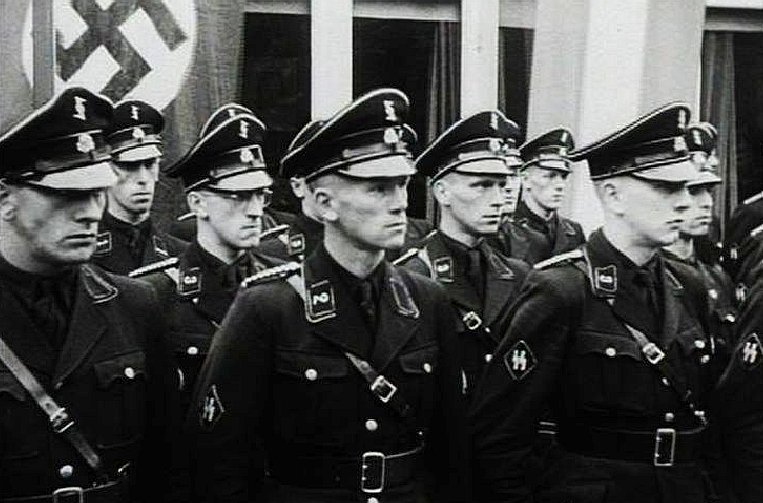
Adolf
Hitler's SS
A
- Z OF NAZI GERMANY
|
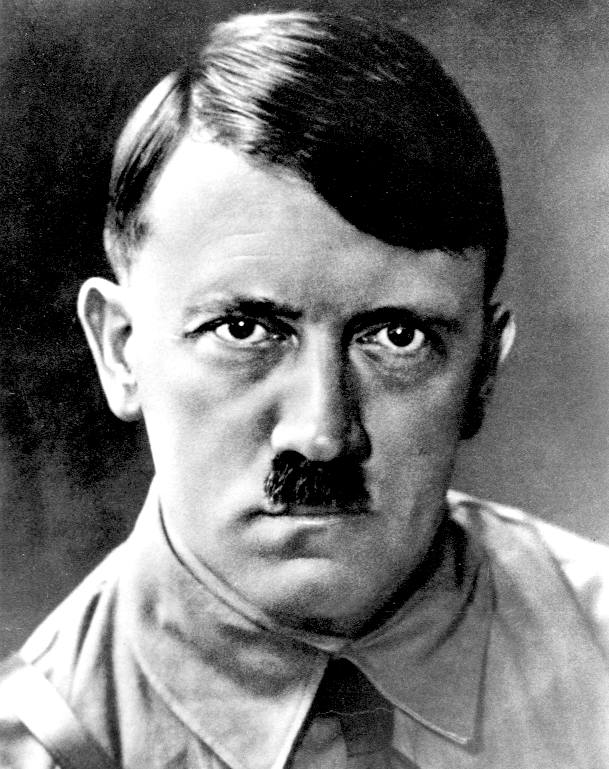
Adolf
Hitler
German
Chancellor
|
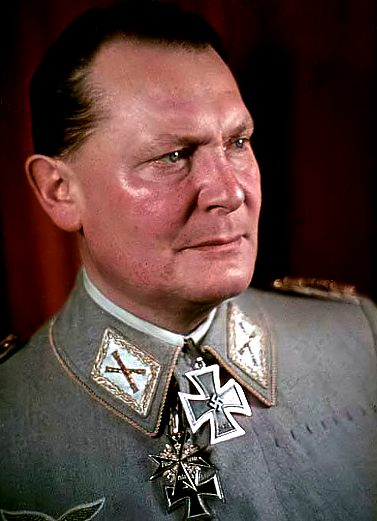
Herman
Goring
Reichsmarschall
Luftwaffe
|
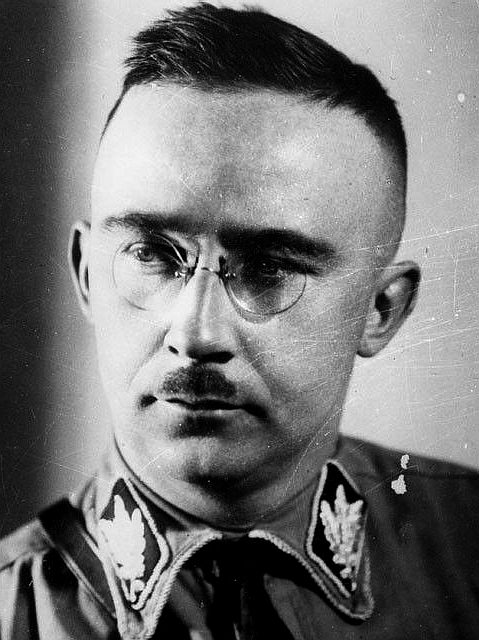
Heinrich
Himmler
Reichsführer Schutzstaffel
|
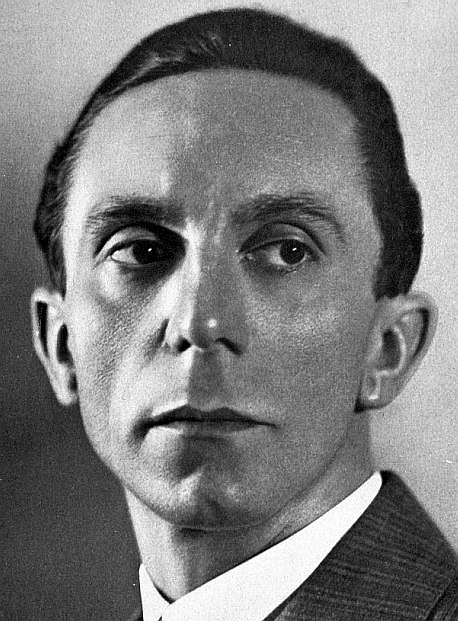
Joseph
Goebbels
Reich Minister Propaganda
|
|
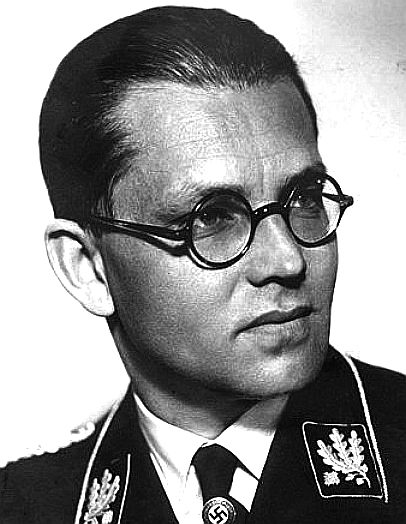
Philipp
Bouhler SS
NSDAP
Aktion T4
|
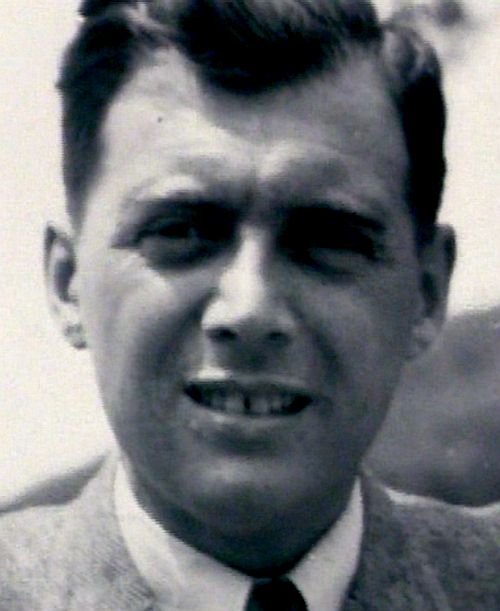
Dr
Josef Mengele
Physician
Auschwitz
|
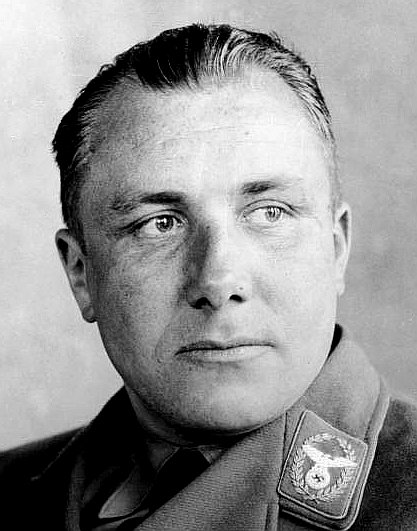
Martin
Borman
Schutzstaffel
|
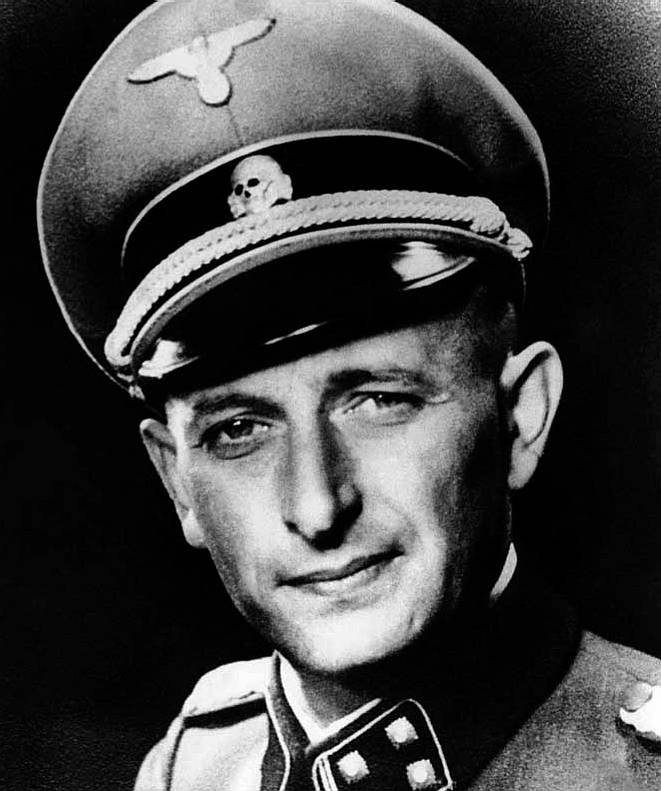
Adolph
Eichmann
Holocaust
Architect
|
|
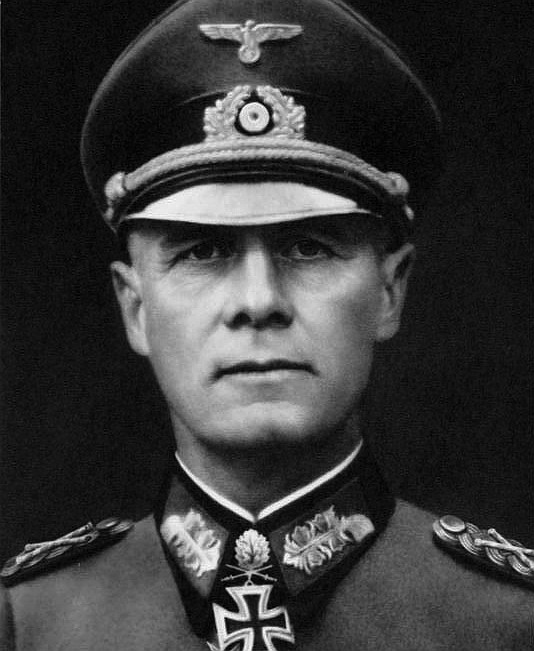
Erwin
Rommel
The
Desert Fox
|
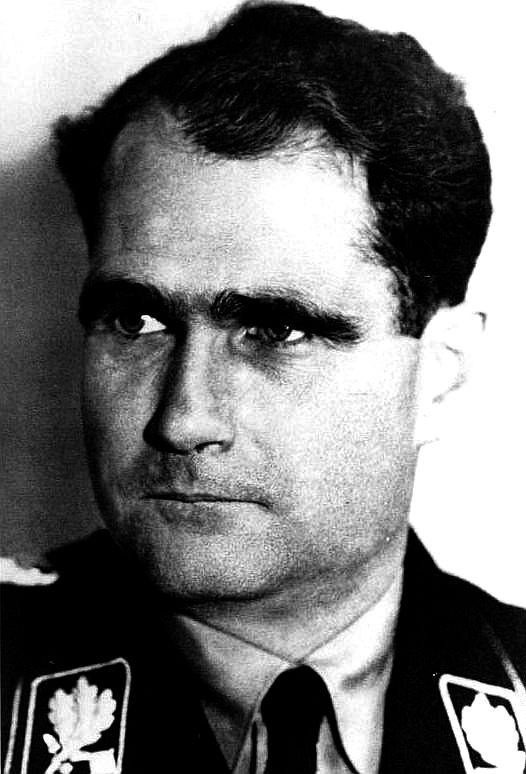
Rudolf
Hess
Auschwitz
Commandant
|
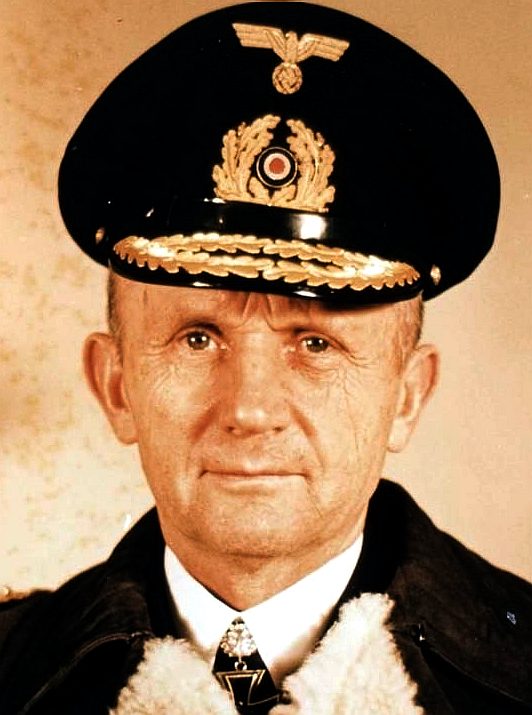
Karl
Donitz
Submarine
Commander
|
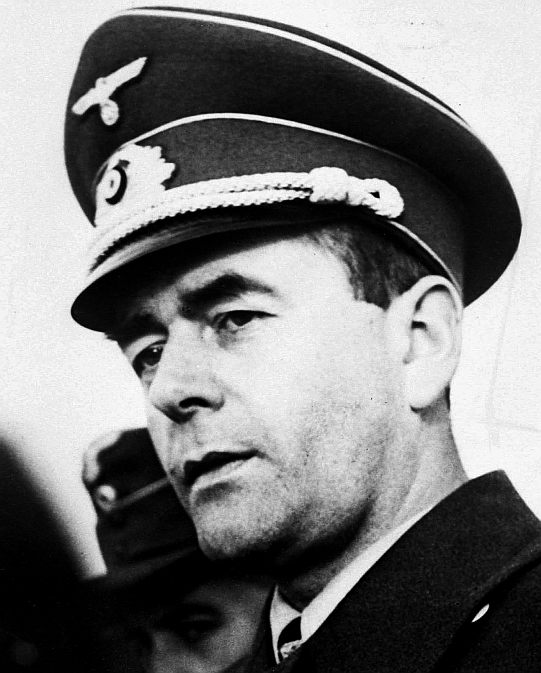
Albert
Speer
Nazi
Architect
|
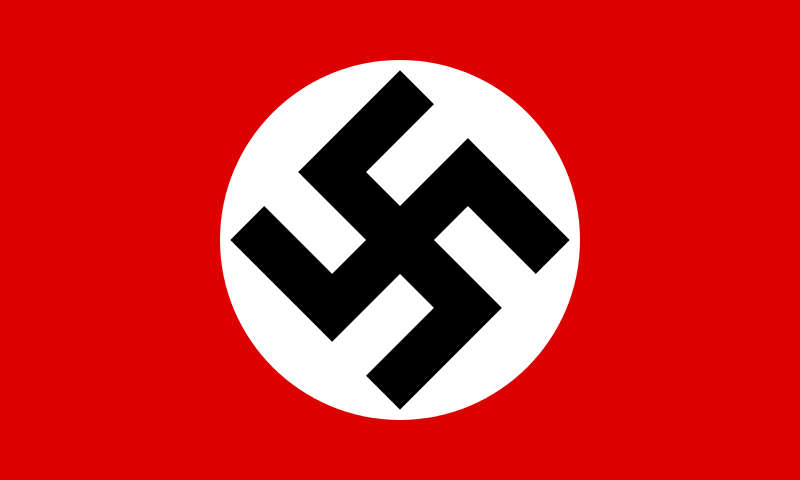
Good,
bad & evil A-Z
of humanity HOME
|















